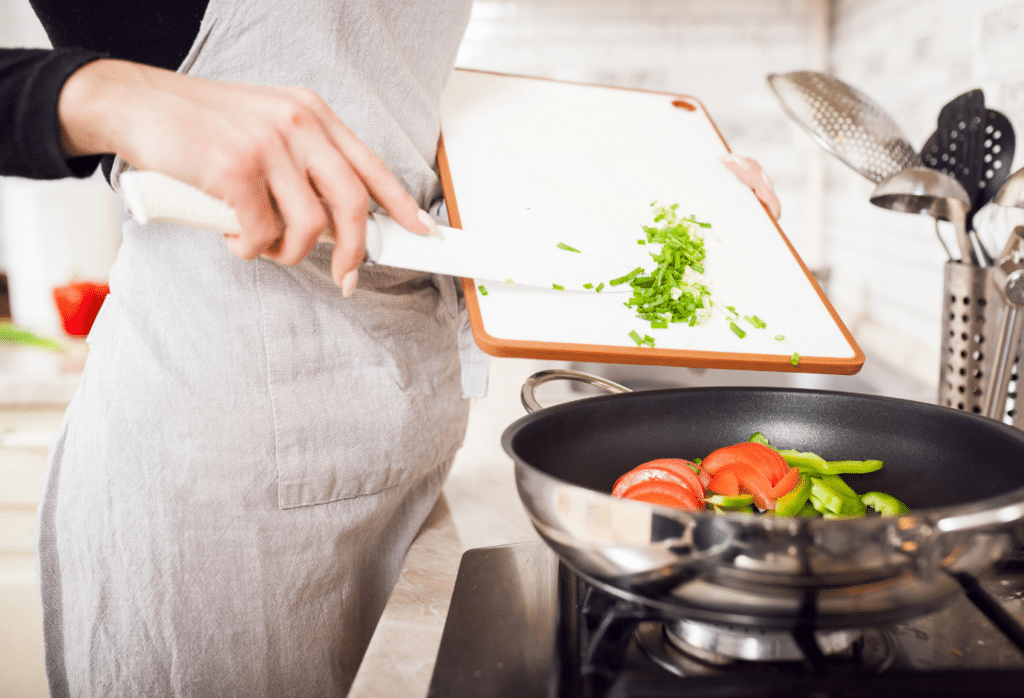We have heard plenty of evidence about the gender gap in domestic housework and care. But when it comes specifically to cooking, are men or women doing more?
A new survey has revealed that the gender gap in who does the ‘home cooking’ has actually expanded over the past year, with women cooking more meals than men in almost every country.
In 2022, women cooked 8.7 meals per week, on average, more than double the number of meals men cooked, which was four per week.
The annual The World Cooking Index, analysed by Gallup and Cookpad, examines how often people prepare and eat home-cooked meals around the world, tracking the way various factors such as gender, age and household size influence people’s cooking habits in 142 countries.
The country with the widest cooking gender gap was Ethiopia, followed by Tajikistan, Egypt, Nepal and Yemen. These are countries where women are often struggling with other issues including human rights, parliamentary representation, education and access to healthcare.
Conversely, the countries where men and women cooked roughly the same number of meals each week are also places with higher awareness of equality between the sexes.
They include Spain, UK, Switzerland and France. In the US, women cooked about two more meals per week than men.
Among the 142 surveyed countries, only one emerged where men cooked more, on average, than women — Italy.
Takako Kotake, managing director at Cookpad, said the study observed a growing clarity in the correlation between cooking frequency and various societal factors.
“Among these factors, the gender perspective emerges as a particularly significant one, impacting crucial aspects of human relationships and overall health,” Kotake explained.
“We encourage a broad audience to explore this dataset, with the hope that it will foster a deeper dialogue about the significance and value of cooking in our lives.”
Andrew Dugan, research director at Gallup, noted that every year since the study started in 2018, the gap narrowed — until last year.
In 2022, women continued to cook at about the same frequency, while men started to cook less.
“It’s the first year that the gap actually widened,” Dugan said.
“What it might suggest is [that] the traditional gender roles are starting to reassert themselves.”
Marital status was also a factor that played a pivotal role in deciding a woman’s cooking habits. On average, married women prepared 6.9 more meals weekly than married men.
However, people who said they were separated cooked the most, with an average of 8.0 meals per week, followed widowed people, those in domestic partnerships, then divorced people.
Single people or those who have never been married cooked the least, with an average of 4.9 meals per week.
“The widening gender gap we saw this year underscores the importance of understanding cultural, societal and economic influences on everyday habits,” Joe Daly, managing partner at Gallup said.
“As we continue to delve into these findings, we aim to supply valuable insights that can inform policymakers, researchers and households about the changing dynamics of home-cooked meals.”
Where you lived also determined how much cooking you did. People living in rural areas or on farms cooked the most, at 6.7 meals per week, while those living in metropolitan areas cooked the least, with an average of 6.1 meals per week.
Finally, income determined how much cooking happened in a household — in 2022, the richest 20 per cent cooked the least at home, with an average of 5.8 meals per week, while the poorest 20 per cent cooked most frequently, with an average of 7.0 full meals each week.
Read the The World Cooking Index report here.


